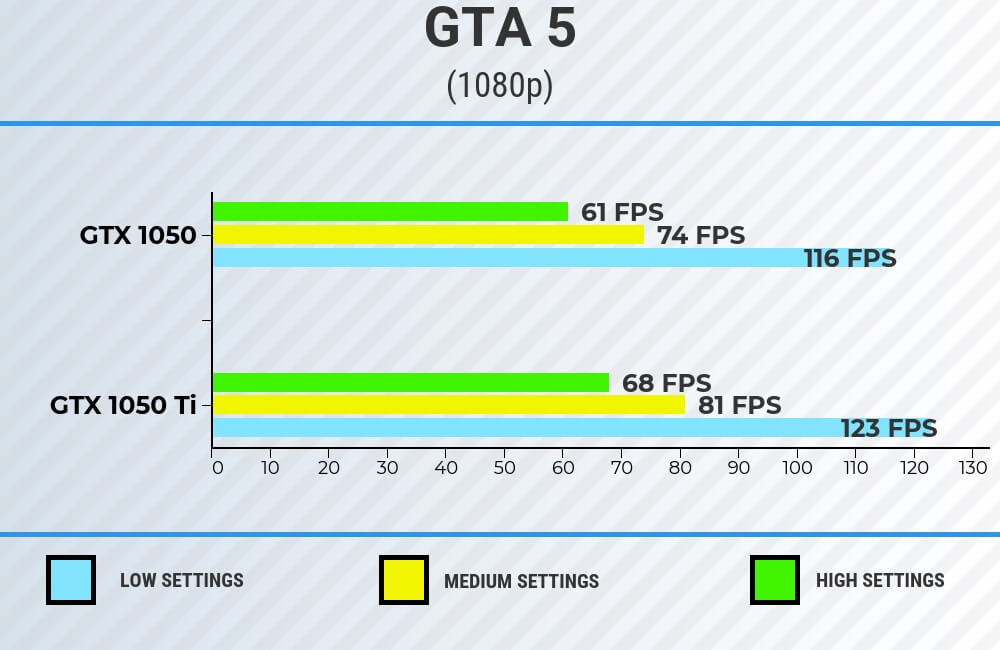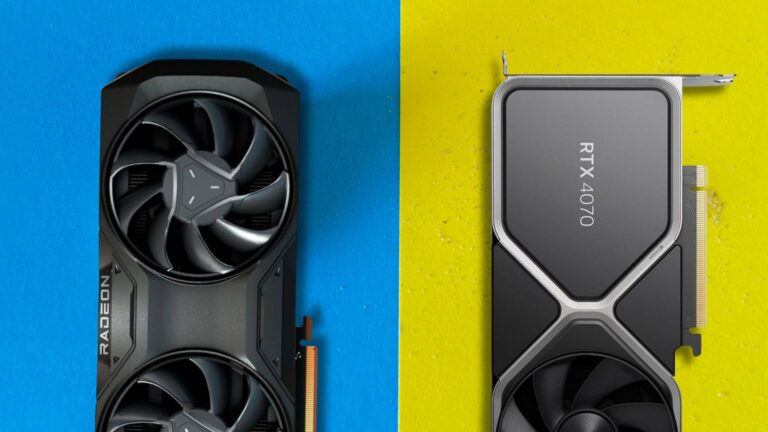Today we’ll be taking a look at the GTX 1050 and 1050 Ti in terms of both their absolute performance and their relative value.
| MSI GTX 1050 2GT OC | Zotac GTX 1050 Ti Mini | |
| GRAPHICS PROCESSING UNIT | NVIDIA® GeForce® GTX 1050 | GeForce® GTX 1050 Ti |
| GPU ENGINE CLOCK SPEED | 1,404MHz (base clock); 1,518MHz (boost clock) | 1,303MHz (base clock); 1,417MHz (boost clock) |
| MEMORY TYPE | GDDR5 | GDDR5 |
| GRAPHICS MEMORY | 2GB | 4GB |
| CARD DIMENSION | 215 x 112 x 38 mm | 144.78mm x 111.15mm |
Expert Reviews For Nvidia GTX 1050:
By TechSpot
Well I have to say that although I haven’t had a chance to check out the multiplayer action yet, I was pleasantly surprised with what I found in the beta experience of Destiny 2. The game looks great, plays well and it’s already significantly more…
By TrustedReviews
The best-value low-budget GPU for eSports gamers.Thanks to Overclockers UK for supplying this review…
By PCWorld
MSI’s overclocked GeForce GTX 1050 graphics card outpunches its AMD rival for significantly lower cost, and can seamlessly slip into prebuilt “big box” computers.
By TechPowerUp
I pretty much feel the same about GTX 1050 non-Ti, its gaming performance is simply too low for anything serious. Please do yourself a favor and save up a little bit more money to get something like GTX 1050 Ti or maybe RX 470, it will make a huge difference, no matter what games you play.
By HotHardware
The new GeForce GTX 1050 and GTX 1050 Ti are interesting products. They won’t set the gaming world aflame with blazing performance, but what they do is allow virtually any PC user to install a Pascal-based graphics card and enjoy many current games at 1080p, without having to worry about power supply limitations.
Expert Reviews For Nvidia GTX 1050 Ti:
By TechSpot
Well I have to say that although I haven’t had a chance to check out the multiplayer action yet, I was pleasantly surprised with what I found in the beta experience of Destiny 2. The game looks great, plays well and it’s already significantly more…
By TrustedReviews
A great-value card for budget HD gaming builds.
By Gizbot
The 1000 series of GTX graphics cards are the latest series of gaming graphics cards from Nvidia. Nvidia is the brand, which is always being associated with gaming and the GTX 1050 Ti is the result of the same, which offers a lot of value for money. If…
By TechRadar
Nvidia has wowed us all this last year with the introduction of the GTX 1060, 1070 and 1080 – cards that truly blow open the doors to more affordable mainstream high-res gaming. However, the GTX 1050 Ti feels like a missed opportunity. It fails to innovate, and you’ll feel the brunt of that decision.
By PCGamer
Competition is fierce in the ultra-budget category, but the GTX 1050 Ti proves to be the best sub-$150 card on the…
Detailed Review & Comparison:
Above we have shown the overview and depth specifications of both the graphics card. Now, we are sharing the full review of both graphics cards.
QUICK SPECS: GTX 1050 vs 1050 Ti
Nvidia GTX 1050 |
Nvidia GTX 1050 Ti |
|
| Cuda Cores | 640 | 768 |
| Base Clock | 1354 | 1290 |
| Boost Clock | 1455 | 1392 |
| Memory | 2GB | 4GB |
| Interface | 128 – BIT | 128- BIT |
| Bandwidth | 112 GB/s | 112 GB/s |
GTX 1050:
Nvidia’s GTX 1050 was released in October of 2016 at a launch price of $109 USD. The GPU clocks in at a frequency of 1354MHz with 640 shaders, is equipped with 2GB of GDDR5 memory, and is rated for 1862 GFLOPS of floating point performance.
The specific GTX 1050 we’ll be testing here today is the MSI GTX 1050 2GT OC.
GTX 1050 Ti:
The GTX 1050 Ti, also released in October of 2016. Starting at a launch price of $139 USD the 1050 Ti runs at a slightly lower frequency of 1291MHz but comes with 768 shaders. Additionally it has 4GB of memory and a higher floating point performance rating of 2138 GFLOPS.
The 1050 Ti we’re testing here comes from Zotac GTX 1050 Ti Mini.
Both cards are rated for a 75W TDP which means they don’t require an extra PCIe power connector, both cards have dual slot coolers, and both cards are equipped with a DVI, DisplayPort, and HDMI connector.
PERFORMANCE: GTX 1050 vs 1050 Ti
For the testing, I’m using the MSI GTX 1050 2GT OC and the Zotac GTX 1050 Ti Mini. The system that I’m testing with has an Intel i5-7500K CPU with 8GB RAM DDR4-2400MHz.
PUBG

First on the list is PlayerUnknown’s Battlegrounds or PUBG. The performance difference between the 1050 Ti and 1050 vanilla is somewhat underwhelming; only about 10% faster on average. 1% and 0.1% lows again show a slightly larger difference, about 23% faster on very low settings and a pretty big 75-90% increase on ultra. With that said, however, both cards are really only good for medium settings if your target is 60FPS.
Rocket League

Second on the list is Rocket League, another esports title. The difference in average FPS is fairly small, in fact only about 6% across the graphics settings. On low settings, the 1050 Ti comes out way ahead; 16% faster in 1% lows and 55% higher in 0.1% lows. On medium settings however, the 1050 Ti drops hard, and on high settings, though the difference is less pronounced, the Ti does carry much less impressive lows. Based on all this, I’d call Rocket League a practical draw between the 1050 and the 1050 Ti.
Battlefield 1

The difference in performance here is actually less than I expected, with the 1050 Ti only about 12-18% faster on average. The performance increase in 1% and 0.1% lows is also modest at only around 10-12%. That said, the 1050 Ti can manage nearly 60FPS on ultra settings whereas the 1050 can only maintain 60FPS on medium to high settings.
Counter Strike: Global Offensive

Next up is Counter Strike: Global Offensive. Since it’s an esports title with relatively simple graphics, the only sizeable difference appears on high settings, with the 1050 Ti about 11% faster on average than the 1050. 1% and 0.1% lows are nearly identical across the board, with the odd exception being low settings where the 1050 Ti actually dropped lower than the 1050. It appears that processor speed is generally the limiting factor here, rather than GPU power.
Deus EX Mankind Divided

Results on low and high settings (which should really be called “medium” since they’re the middle preset) are very close – less than 9% difference between the two cards. On ultra, the 1050 Ti does come out ahead with a sizable 25% lead, but the caveat there is it’s still only running at 25FPS. Not exactly “playable” territory.
Just Cause 3

The next game in the list is Just Cause 3, the first to show a reasonably significant difference in performance. Across the graphics settings the 1050 Ti averaged about 15% faster than the 1050, but the big difference was in the lows. On low settings, the 1% and 0.1% lows were about 30% faster, while on medium settings the lows were 37% and 86% faster, respectively. Basically that translates to the 1050 Ti having much less stuttering at those graphics settings than the 1050, but this performance gap closes quite a bit once you put the game on high settings.
Overwatch

Next up is the esports title, Overwatch. Again, the 1050 Ti averages around 16% faster across the graphics settings but a sizeable difference appears in the lows. On low settings, especially, the 1050 Ti comes out far ahead in 1% and 0.1% lows with an increase of 26% in 1% lows and 64% in 0.1% lows. On high settings (which, again, should be called “medium” since it’s the middle preset) the 1050 Ti keeps a still healthy 30% lead in lows over the 1050. The biggest takeaway here, I’d argue, is that with the game maxed out, the 1050 does drop to below 60FPS in the 0.1% case while the 1050 Ti always maintains over 60 frames per second.
GTA 5

Last is GTA 5. As usual, results on low settings don’t make any sense because of a stuttering glitch that GTA has. It might be possible to fix this by capping the frame rate. On medium settings the 1050 Ti comes out about 9% faster than the 1050 in average, 1% low, and 0.1% low frame rates. On high settings, the Ti is about 11% faster except for 0.1% lows, where it stayed about 22% faster than the 1050. It should be noted that both cards averaged over 60FPS on high settings, keeping it comfortably playable at all times.
POWER & TEMPERATURES: GTX 1050 vs 1050 Ti
Nearly every graphics card comes with a different cooler and it’s not reasonable (and really not relevant) to put the same aftermarket cooler on each one.
In this case for both cards, fan speed was set to 45% (the minimum allowed by their BIOS) and temperatures were measured in a room at 24C.
Power measurements are for the entire test setup as measured from the wall, idle measurements were taken after the computer sat idle at the desktop for 15 minutes, and load measurements were taken after 15 minutes of running Unigine’s Valley benchmark.
Idle Results:
At idle, the 1050 drew 32W and settled at 31C while the 1050 Ti drew 47W and sat at around 33C.
Underload Results:
Under load, the 1050 drew 106W and peaked at 76C with the 1050 Ti also drew 106W but only hit 62C – an indication of a better cooling system from Zotac rather than a difference in heat output.
WHICH TO BUY: GTX 1050 or 1050 Ti
I was actually surprised by these results. Without comparing them side by side, I would’ve assumed the 1050 Ti to be a significantly stronger card than the 1050, not a mere 10-15% faster. On top of that, the value proposition of the 1050 Ti is, at least for right now, completely blown out of the water. It’s just not worth it to pay the extra $40 to get such a small bump in performance. If 1080p gaming is your thing, and for the vast majority of people it is, you’ll be served much better by a GTX 1050 than a 1050 Ti.





